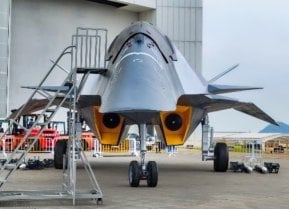Meet the Marine Raiders, the Marine Corps Special Operations Component
Raider candidates go through a two-phase screening, followed by a nine-month training program in skills including demolitions, diving, foreign languages, close-quarters combat, and wilderness survival.
When it comes to the elite units within United States Special Operations Command (USSOCOM), The National Interest has recently published my articles on the Army’s Delta Force and Special Forces (“Green Berets”) as well as the Navy’s SEAL Team 6 aka DEVGRU. Meanwhile, still pending publication as I type these words are my writeups on the Air Force’s Special Tactics Teams, more specifically the Combat Controllers (Pararescuemen aka Pararescue Jumpers).
But as the proud son of a World War II Marine, I would be remiss if I didn’t include the “Devil Dogs” component of SOCOM, the Marine Raiders.
Job description and mission
As per the Who We Are section of the Marine Raiders’ official info page:
“Marine Raiders are a force, expeditionary in nature, prepared to thrive in uncertain, chaotic, and austere environments, determined to excel with Spiritus Invictus – an ‘unconquerable spirit.’”
From there, the page lists eight mission categories: Direct Action; Special Reconnaissance; Counterterrorism; Foreign Internal Defense; Security Force Assistance; Counterinsurgency; Support to Combating Weapons of Mass Destruction; Support to Unconventional Warfare.
Where it began
The original “Marine Raiders” were Calrson’s Raiders of WWII, a special operations unit who, under the command of their namesake, Lt. Colonel Evans Fordyce Carlson, gained fame for their successful assault against Imperial Japanese forces on Makin Island in August 1942 and the “Long Patrol” behind Japanese lines on Guadalcanal in November 1942 that killed 488 enemy soldiers.
However, those original Marine Raiders were disbanded in January 1944 (more than a year and a half before WWII even ended). As noted by my TNI colleague Sebastien Roblin back in October 2019, for the next six decades, the Marine Corps brass was loath to create any new dedicated special operations units, though they certainly had (and still have) their badass “Special Operations Capable” units such as Marine Recon and Force Recon.
However, as Roblin adds, “The Marines were finally compelled to form dedicated special forces battalions 2003 by Special Forces-loving Rumsfeld defense department. In 2015, Marine special forces battalions were then integrated into a new Raider Regiment based at Camp Lejeune, North Carolina.“ Accordingly, the Marine Raider Regiment consists of a Headquarters Company and three Marine Raider Battalions (1st, 2nd, and 3nd), each divvied into four companies. Each of those four companies is broken down further into four fourteen-man teams called Marine Special Operations Teams.
The Raiders Battalions are backed up by a Raider Support Group (bear in mind the USMC philosophy that “every Marine is a rifleman”) with three more battalions including specialist multi-purpose Military Working Dog/K-9 handlers, surveillance, and forward observers (aka “fire support Marines”).
Significant accomplishments of the Marine Raiders
Roblin states that “Raiders have been involved in actions ranging from brutal urban warfare against ISIS in Mosul, Iraq and Marawi in the Philippines, to counter-terror actions in Mali.” Other instances of their combat experience include:
In response to an attack by Al Qaeda in the Islamic Maghreb on the Radisson Blue Hotel in Mali’s capital city of Bamako on November 20, 2015, an unnamed Marine Raider with the 3rd Battalion led a team that rescued roughly 150 hostages, earning a Silver Star for his actions.
In October 2016, another Marine Raider—this time the 2nd Battalion claimed the bragging rights—earned a Silver Star (awarded in 2019). The action took place during the Mosul liberation phase of Operation Inherent Resolve, the anti-ISIS campaign in Iraq, whereupon the Raider destroyed an ISIS armored-vehicle improvised explosive device with an FGM-148 Javelin missile.
From January to December 2017, Capt. Kyle Rodgers led Special Operations Task Force 511.2 in support of Operation Pacific Eagle-Philippines, officially tabbed an “advise and assist” role in the campaign to retake the city of Marawi, which had been under the control of ISIS-P, a Philippine-based ISIS-aligned organization. Rodgers earned the Douglas A. Zembiec Award for outstanding leadership in the Marine Forces Special Operations Command, for his role as team commander; his award citation read in part that “His leadership and efforts led to more than 800 enemy killed in action, to include the FBIs most wanted terrorist in the region, and the complete disaggregation of ISIS-P leadership in the southern Philippines.”
Weapons of the Marine Raiders
According to Tier Three Tactical:
- Glock 19 9x19mm pistol (replaced the Colt M45A1 variant of the legendary M1911A1 .45 ACP pistol)
- Daniel Defense MK18 SBR (Short-Barrelled Rifle) 5.56×45mm NATO carbine (replaced the SCAR series)
So, you wanna be a Recon Marine?
More power to you! Becoming a Marine is tough enough from a mental and physical standpoint, but to become a Marine Raider, you have to take those mental and physical challenges to a whole other level!
Raider candidates go through a two-phase screening, followed by a nine-month training program in skills including demolitions, diving, foreign languages, close-quarters combat, and wilderness survival.
Phase 1 alone of the two-phase Assessment and Selection (A&S) course consists of the following: a PFT (Physical Fitness Test; minimum score of 235 out of 300); an abandon ship drill; a 300-meter swim; an eleven-minute tread; a 12-mile ruck march, and a physical in-test.
OORAH and Semper Fidelis, Marine Raiders!


